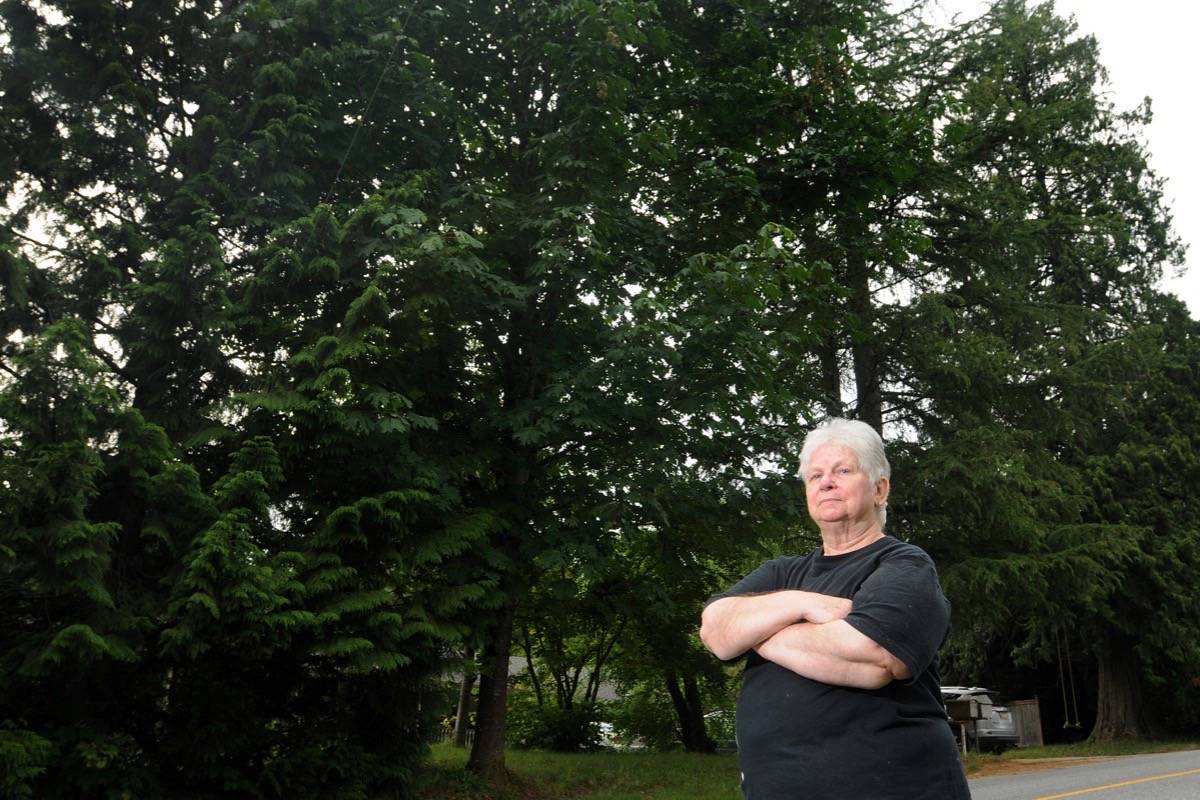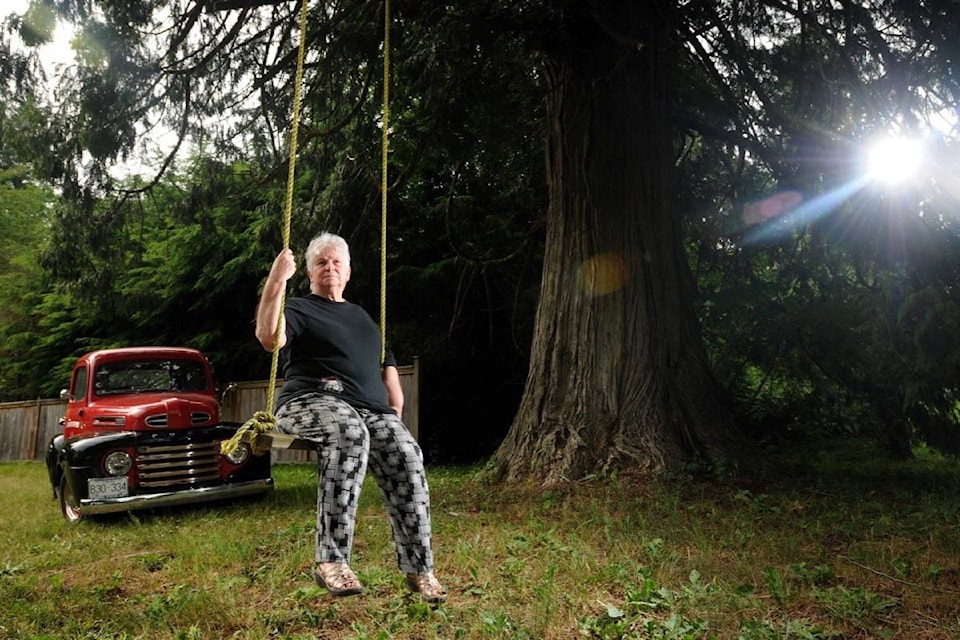A professional forester and soil specialist with 30 years experience believes a row of trees in east Maple Ridge, including an old cedar, should not be cut down by Fortis B.C. for a gas line.
The trees are located on the west side of 268th Street, near 100th Avenue, and are on City of Maple Ridge property.
Michelle Purcell, who owns the property that 12 of those trees border, first heard about Fortis’ plans last summer, when she spotted a contractor along the right-of-way in front of her house. He told her at the time that the trees can’t be any closer than six metres to the gas line.
Purcell said the gas line was installed in 1956 and guesses that the cedar in front of her house was about 100 years old when she moved in in 1974.
The trees include a couple of old cedars, some firs and a hemlock.
However, Mike Prueter, a retired forest consultant and soil technician, who did his thesis on soils at Lakehead University in Ontario, said the argument that Fortis is making about why the trees have to be removed doesn’t make sense.
“I did my thesis in soils, so I know how roots grow and how deep they grow.”
Prueter started his career as a forest technician in 1974 with an Ontario lumber company. He has been an assistant park warden at a national park in Quebec, a soil technician with an engineering company in Calgary, and a forester with the B.C. Ministry of Forests. He worked as a customer sales representative for Pelton Reforestation and marketing director and forest consultant for Global Forest Nursery Development Inc., both in Maple Ridge.
Prueter said that tree roots will stay in the top four feet of soil, and that normally gas lines are laid at least six feet underground, then back-filled with gravel and sand.
“Tree roots don’t want to grow there. They don’t want to grow in that kind of material. They want to grow where it’s like peat moss and it’s decomposing organic material, which we call humus,” he said.
What tree roots want most, he added, is oxygen.
“The deeper you go, the less oxygen there is and they want to be able to exchange with the micro-organisms that are in the soil that we call mycorrhiza, like a fungal activity, and exchange,” he said.
“One square foot of soil in the humus layer there are over 100,000 organisms, different kinds of organisms and micro-organisms that are helping in the decomposition and nutrient uptake in the roots and in the fibrous roots. It’s the fine hairs that pick up the nutrients. It’s not these roots that are six inches in diameter,” said Prueter.
Not only would Fortis will be cutting down what he called “heritage trees,” but the hydrology of the water table and the whole eco-system of the area would be affected.
“You are going to be affecting everybody’s wells, because everybody is on wells up there.”
Prueter said trees retain water in the soil and the removal of them could mean more surface run-off the instead of water going back into the aquifer, or underground lake, to be recycled.
When Prueter was still a university student, he worked for a landscaping company that installed in-ground pools. To protect trees in close proximity to the pools, the company would build a trench and install a metal retaining wall. He believes this could be a solution to the current problem.
“Put in metal retaining wall in the ground and on one side, tree side, put copper paint or zinc paint and mix it with another kind of really durable paint,” said Prueter. “Something that would retard the root growth. And that metal will stay there for a long long time because there is hardly any oxygen there and oxygen is what causes metal to corrode.”
Nicole Bogdanovic, with Fortis B.C., said the company still has to follow regulations regardless of the type of tree. She said Fortis has to comply with the Oil and Gas Commission Act to maintain the safety and integrity of pipes.
“It’s a relief to know that they are shallow rooted and it doesn’t pose any immediate risk to our system,” said Bogdanovic.
“But at the end of the day, there is a certain amount of clearance that is required above our rights-of-way, and regardless of the type of tree, we have to maintain that right-of-way. It’s our responsibility to do so.”

